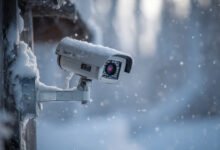6 Steps to Keep Your Mobile Devices Safe

Our phones have become an extension of our bodies, storing everything from our most personal memories to our banking information to the restaurants we love. They are essential, personal, and highly susceptible to being stolen. They are also at risk of cyberattacks, which means that even if your phone or tablet is always in your possession, your data may not be secure. So what can you do to protect yourself? Here are six easy steps you can take to keep your mobile devices safe.
Related: Smart indoor home security cameras to buy in 2021
Use a Strong password to keep your mobile devices safe
Make sure no one has access to your confidential data, photos, emails, etc. always using a strong password. We know it can be annoying having to type it all the time, but it’s worth it.
If you use your phone 24/7, you can also set it to unlock in certain locations, such as your home. However, we do not recommend setting it to be unlocked at work, as there is a greater chance of it being stolen there than at home.
Turn off location information for photos
Did you know that all the photos you take are geotagged? And when he shares those photos, for example on social media, those geotags are shared with him. If the thought of someone online having access to your exact home location, for example, worries you (and you should!), Then you’ll want to turn off geotagging for their photos.
Turn off Bluetooth
Bluetooth is a great technology. It makes it possible to connect devices in ways that were previously only possible in science fiction. But it also offers another entry point to your phone. While cybercriminals must be physically close enough to you to launch a Bluetooth attack, why take the risk? Just turn off Bluetooth when you’re not using it. And as a bonus, you’ll help the battery last longer!
Related: The Facts About Single Sign-On (SSO)
Use a VPN
Using a virtual private network (VPN) on all of your devices, and yes, that includes mobile devices, protects you from cybercriminals, government spying, and anyone else who may be trying to see your online activity. VPNs create a secure connection between your device and the server in the form of an encrypted “tunnel”.
Make sure your security features are enabled
If you have an iPhone or iPad, you can turn on “Find My iPhone”, which will help you track your device if it is lost or stolen. For Android, there is usually a “Find my device” option. Both will not only help you track your devices, but will also give you the option to erase everything on them, in case you can’t get them back. That provides greater protection against strangers accessing your personal data.
Be careful with app permissions
Apps need permissions, this is how they work. But some companies take advantage of application permissions by asking for more than they need. So take a minute to think about whether a new app really needs the permissions it requests. For example, Instagram would like to know your location, but how much benefit does know where you are? The answer probably depends on how you use Instagram.
Unnecessary app permissions are also a favorite way for malicious actors to gain access to your device. Many antivirus companies have found several cases where cybercriminals used app permissions to install malware on people’s devices. So, you know, use your common sense. We hope you will follow these tips to keep your mobile devices safe.












2 Comments